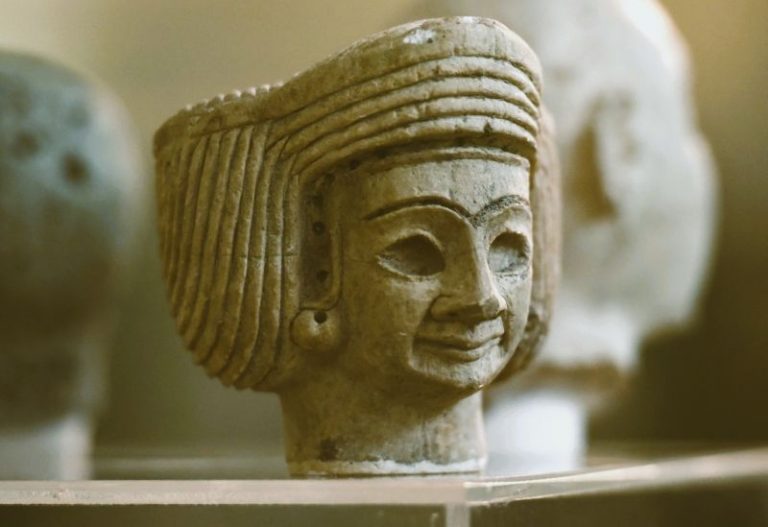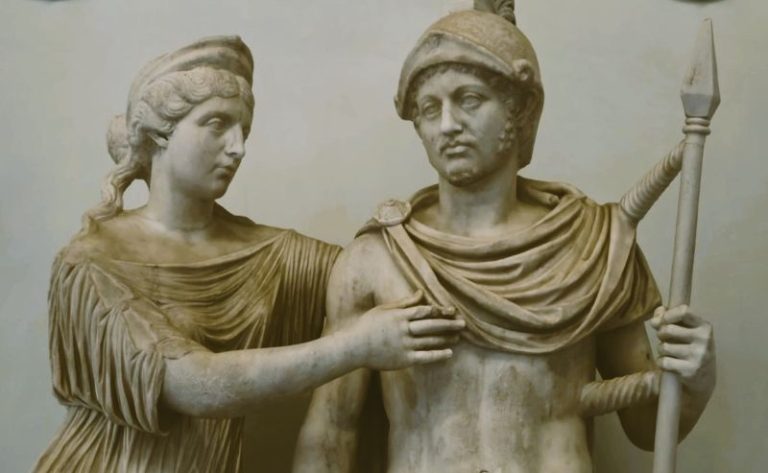
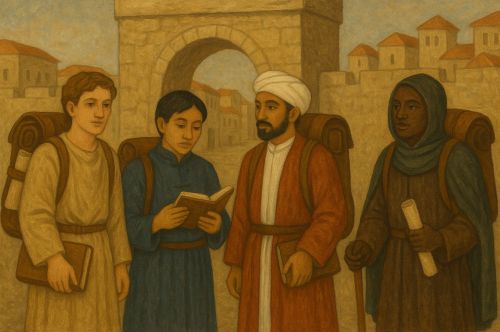
The history of student foreign exchange and educational migration is inseparable from the history of power, empire, and globalization.

By Matthew A. McIntosh
Public Historian
Brewminate
Introduction
The circulation of students across cultural, linguistic, and geographic boundaries is not simply a modern phenomenon of jet-age internationalism. It is instead a deeply rooted tradition stretching back to the ancient world, evolving across medieval scholasticism, colonial empires, and into today’s globalized academic institutions. This essay traces the long history of student foreign exchange programs and the broader patterns of educational migration, examining how such movements have reflected structures of power, knowledge, and cultural encounter.
Antiquity and the Classical World
The practice of leaving one’s homeland to pursue education can be traced as far back as the civilizations of Mesopotamia, Egypt, and Greece. In ancient Egypt, scribal schools attracted students from provincial towns to centralized centers of instruction where hieroglyphic literacy and administrative skills were transmitted across generations.1 Greek city-states, particularly Athens, became magnets for foreign students who sought the teachings of philosophers such as Plato and Aristotle.2 The Hellenistic world following Alexander’s conquests only deepened these patterns, as Alexandria and other urban hubs attracted students of medicine, rhetoric, and mathematics from across the Mediterranean and Near East.3
Similarly, in Rome, rhetorical schools and law training became cosmopolitan institutions drawing students from provinces as far away as Gaul or Asia Minor.4 For elites, sending sons to the imperial capital became a mark of status, embedding education within broader practices of social reproduction and mobility.
Medieval Scholasticism and Religious Networks

The medieval university system institutionalized student migration on an unprecedented scale. Bologna, Paris, Oxford, and later Prague or Heidelberg were not parochial institutions, but international centers attracting students from across Christendom.5 The use of Latin as a lingua franca enabled a Polish or Spanish student to study theology in Paris alongside peers from England or Italy.
Religious orders also promoted structured mobility. Benedictine, Dominican, and Franciscan networks moved novices across regions for training.6 Islamic centers of learning similarly cultivated cosmopolitan educational exchange, with students traveling to Baghdad, Cairo, or Cordoba in pursuit of specialized jurisprudence or theology.7 In both Christian and Islamic worlds, pilgrimage and education often overlapped, reinforcing intellectual circulation as a spiritual journey.
Renaissance Humanism and Early Modern Expansion
The Renaissance witnessed an intensification of cross-border scholarly travel. Humanists such as Erasmus of Rotterdam embodied this mobility, studying, teaching, and writing across a range of European centers.8 Wealthy families sent their children abroad for the Grand Tour of education, combining exposure to classical antiquities with study under celebrated scholars.
The early modern period also saw the emergence of structured diplomatic and cultural exchanges. Jesuit missions created educational networks spanning Europe, Asia, and the Americas.9 These institutions introduced not only new theological frameworks but also mechanisms for intercultural scholarly movement, with Chinese or Japanese converts sometimes traveling to Rome for training.
Colonialism, Missionary Education, and the Globalization of Student Migration
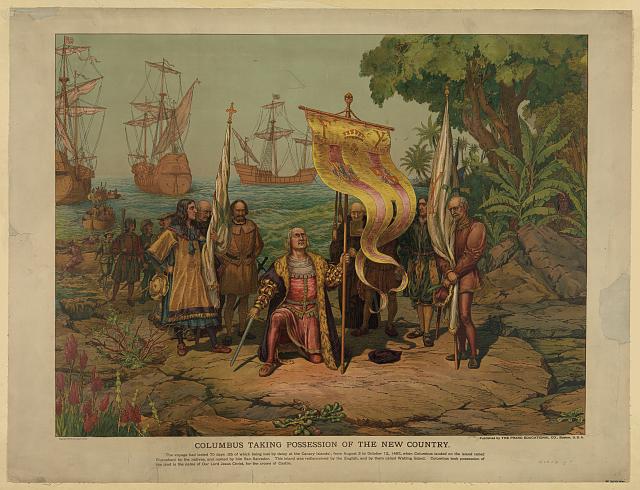
The age of colonial expansion transformed the landscape of student mobility. Colonized elites were often sent to imperial metropoles for training, both as a means of governance and as a symbol of assimilation into European culture.10 Indian, African, and Caribbean students studied in London or Paris, forming diasporic intellectual communities that would later play pivotal roles in independence movements.11
Missionary societies also facilitated educational migration, sponsoring the travel of students from colonized lands to Europe or America, often with the dual aim of producing indigenous clergy and assimilated intermediaries.12 This dynamic underscores how student migration became a tool not just of intellectual exchange but also of cultural domination.
At the same time, these exchanges were not one-sided acts of cultural imposition. Students educated abroad often developed hybrid intellectual frameworks that challenged colonial authority.13 Figures such as Kwame Nkrumah of Ghana or Ho Chi Minh of Vietnam, who both studied abroad, transformed their exposure into anti-colonial ideologies that reshaped the modern world.14 In this sense, educational migration under colonialism became a double-edged sword: a mechanism of empire but also a seedbed of resistance.
Moreover, colonial-era student migration began to intersect with the sciences and technologies of empire. Students trained in engineering, medicine, and law abroad often returned home to modernize their societies, introducing infrastructures and institutions patterned on Western models.15 Yet these imports were selectively reinterpreted, producing forms of knowledge that were neither wholly “Western” nor purely “indigenous” but rather creolized hybrids that reflected the entanglements of global empire.16
Nineteenth-Century Professionalization
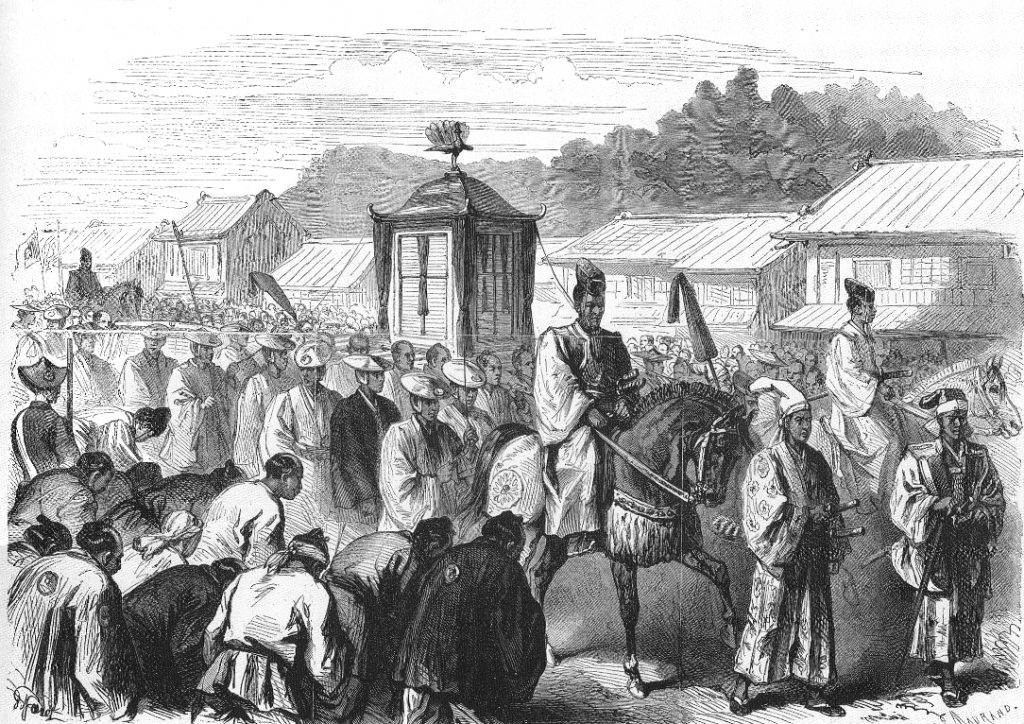
By the nineteenth century, educational migration was increasingly linked to the professionalization of science, medicine, and law. German universities, with their research model and seminar system, became especially attractive to students from the United States, Russia, and Japan.17 Johns Hopkins University in the United States explicitly modeled itself on German precedents, illustrating the transnational transfer of institutional forms.
It was also not uncommon during this era for teachers themselves to become part of the mobility system. Traveling tutors and professors would relocate to live with students’ families, particularly in elite households, as both cultural mediators and personal educators.18 These arrangements blurred the line between domestic and academic space, embedding transnational education into the rhythms of everyday life.
Governments also began to systematize scholarships, sending promising students abroad to acquire specialized expertise for state-building projects. The Meiji state in Japan famously dispatched students to study Western science and technology, while Ottoman and Egyptian reformers did likewise.19 Student mobility was now intertwined with projects of modernization and national prestige.
Twentieth-Century Institutionalization
The twentieth century witnessed the formalization of student exchange as a diplomatic and cultural tool. After World War I, programs such as the Rhodes Scholarship (founded earlier in 1902) and the expansion of Fulbright scholarships after World War II epitomized the use of education for soft power.20 International organizations like UNESCO promoted cross-border academic mobility as a means of fostering peace and mutual understanding.
Student exchanges were also central to Cold War competition. The Soviet Union hosted students from socialist-leaning states in Asia and Africa, while the United States funded programs to bring foreign students to American universities.21 These initiatives were intended not only to educate but also to ideologically influence future leaders.
Contemporary Globalization and Challenges
By the late twentieth and early twenty-first centuries, student migration became a mass phenomenon. Millions of students annually cross borders to pursue higher education, with Anglophone countries such as the United States, United Kingdom, Canada, and Australia serving as primary destinations.22 Simultaneously, new hubs have emerged: China, Singapore, and the Gulf states are increasingly attracting international students.23
The motivations are varied: economic opportunity, cultural capital, and global networking. Yet challenges abound. Migration can exacerbate brain drain, as talented students remain abroad rather than returning to their countries of origin.24 Questions of equity, visa politics, and cultural assimilation continue to shape the field.
Conclusion
The history of student foreign exchange and educational migration is inseparable from the history of power, empire, and globalization. From ancient scribal schools to Cold War scholarships, from missionary education to modern study-abroad programs, mobility has reflected not only the pursuit of knowledge but also the contest over culture and authority. In our present moment, as debates over borders and belonging intensify, the long arc of educational migration reminds us that learning has always been a fundamentally transnational pursuit.
Appendix
Footnotes
- Ronald J. Williams, “Scribal Training in Ancient Egypt,” Journal of the American Oriental Society 92:2 (April-June 1972), 218.
- Diogenes Laertius, Lives of Eminent Philosophers, trans. R.D. Hicks (Cambridge: Harvard University Press, 1925), 3:40–45.
- Serafina Cuomo, Pappus of Alexandria and the Mathematics of Late Antiquity (Cambridge: Cambridge University Press, 2000), 14–18.
- Teresa Morgan, Literate Education in the Hellenistic and Roman Worlds (Oxford: Oxford University Press, 1999), 99–104.
- Hastings Rashdall, The Universities of Europe in the Middle Ages, ed. F.M. Powicke and A.B. Emden (Oxford: Oxford University Press, 1895), 1:45–50.
- Jacques Verger, Men of Learning in the Middle Ages (Notre Dame: University of Notre Dame Press, 1997), 88–90.
- George Makdisi, The Rise of Colleges: Institutions of Learning in Islam and the West (Edinburgh: Edinburgh University Press, 2013), 102–110.
- Lisa Jardine, Erasmus, Man of Letters (Princeton: Princeton University Press, 1993), 33–36.
- Luke Clossey, Salvation and Globalization in the Early Jesuit Missions (Cambridge: Cambridge University Press, 2008), 77–83.
- Gauri Viswanathan, Masks of Conquest: Literary Study and British Rule in India (New York: Columbia University Press, 1989), 21–25.
- P. Olisanwuche Esedebe, Pan-Africanism: The Idea and Movement, 1776–1991 (Washington, D.C.: Howard University Press, 1994), 114–118.
- Brian Stanley, The Bible and the Flag: Protestant Missions and British Imperialism in the Nineteenth and Twentieth Centuries (Leicester: Apollos, 1990), 142–145.
- Dipesh Chakrabarty, Provincializing Europe (Princeton: Princeton University Press, 2000), 43–47.
- Kevin Shillington, History of Africa (London: Macmillan, 2018), 380–385.
- David Arnold, Science, Technology, and Medicine in Colonial India (Cambridge: Cambridge University Press, 2000), 201–206.
- Homi Bhabha, The Location of Culture (London: Routledge, 1994), 112–115.
- Charles McClelland, State, Society, and University in Germany, 1700–1914 (Cambridge: Cambridge University Press, 2008), 233–238.
- William J. Reese, The Origins of the American High School (New Haven: Yale University Press, 1995), 56–59.
- Carol Gluck, Japan’s Modern Myths: Ideology in the Late Meiji Period (Princeton: Princeton University Press, 1985), 72–76.
- John Krige and Helke Rausch, eds., American Foundations and the Coproduction of World Order in the Twentieth Century (Göttingen: Vandenhoeck & Ruprecht, 2012), 55–58.
- Ivan Kurilla, et.al., Russian/Soviet Studies in the United States, Amerikanistika in Russia, (Stanford: Stanford University Press, 2003), 101–107.
- Philip G. Altbach, Liz Reisberg, and Laura E. Rumbley, Trends in Global Higher Education: Tracking an Academic Revolution (Paris: UNESCO, 2009), 19–21.
- Simon Marginson, Higher Education and the Common Good (London: Routledge, 2016), 67–70.
- Devesh Kapur and John McHale, Give Us Your Best and Brightest: The Global Hunt for Talent and Its Impact on the Developing World (Washington, D.C.: Center for Global Development, 2005), 44–47.
Bibliography
- Altbach, Philip G., Liz Reisberg, and Laura E. Rumbley. Trends in Global Higher Education: Tracking an Academic Revolution. Paris: UNESCO, 2009.
- Arnold, David. Science, Technology, and Medicine in Colonial India. Cambridge: Cambridge University Press, 2000.
- Bhabha, Homi. The Location of Culture. London: Routledge, 1994.
- Chakrabarty, Dipesh. Provincializing Europe. Princeton: Princeton University Press, 2000.
- Clossey, Luke. Salvation and Globalization in the Early Jesuit Missions. Cambridge: Cambridge University Press, 2008.
- Cuomo, Serafina. Pappus of Alexandria and the Mathematics of Late Antiquity. Cambridge: Cambridge University Press, 2000.
- Diogenes Laertius. Lives of Eminent Philosophers. Translated by R. D. Hicks. Cambridge: Harvard University Press, 1925.
- Esedebe, P. Olisanwuche. Pan-Africanism: The Idea and Movement, 1776–1991. Washington, D.C.: Howard University Press, 1994.
- Gluck, Carol. Japan’s Modern Myths: Ideology in the Late Meiji Period. Princeton: Princeton University Press, 1985.
- Jardine, Lisa. Erasmus, Man of Letters. Princeton: Princeton University Press, 1993.
- Kapur, Devesh, and John McHale. Give Us Your Best and Brightest: The Global Hunt for Talent and Its Impact on the Developing World. Washington, D.C.: Center for Global Development, 2005.
- Krige, John, and Helke Rausch, eds. American Foundations and the Coproduction of World Order in the Twentieth Century. Göttingen: Vandenhoeck & Ruprecht, 2012.
- Kurilla, Ivan, et.al. Russian/Soviet Studies in the United States, Amerikanistika in Russia. Maryland: Lexington Books, 2015.
- Makdisi, George. The Rise of Colleges: Institutions of Learning in Islam and the West. Edinburgh: Edinburgh University Press, 2013.
- Marginson, Simon. Higher Education and the Common Good. London: Routledge, 2016.
- McClelland, Charles. State, Society, and University in Germany, 1700–1914. Cambridge: Cambridge University Press, 2008.
- Morgan, Teresa. Literate Education in the Hellenistic and Roman Worlds. Oxford: Oxford University Press, 1999.
- Rashdall, Hastings. The Universities of Europe in the Middle Ages. Edited by F. M. Powicke and A. B. Emden. Oxford: Oxford University Press, 1895.
- Reese, William J. The Origins of the American High School. New Haven: Yale University Press, 1995.
- Shillington, Kevin. History of Africa. London: Macmillan, 2018.
- Stanley, Brian. The Bible and the Flag: Protestant Missions and British Imperialism in the Nineteenth and Twentieth Centuries. Leicester: Apollos, 1990.
- Verger, Jacques. Men of Learning in the Middle Ages. Notre Dame: University of Notre Dame Press, 1997.
- Viswanathan, Gauri. Masks of Conquest: Literary Study and British Rule in India. New York: Columbia University Press, 1989.
- Williams, Ronald J. “Scribal Training in Ancient Egypt.” Journal of the American Oriental Society 92:2 (April-June 1972), 221-224.
Originally published by Brewminate, 08.21.2025, under the terms of a Creative Commons Attribution-NonCommercial-NoDerivatives 4.0 International license.
